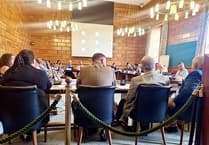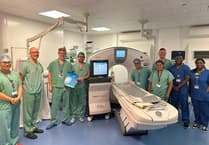Councillors have expressed ‘concerns’ about plans to replace paid co-responders with trained volunteers across Devon and have asked the ambulance service to ‘pause’ and provide more information within four weeks.
Devon County Council’s Health and Adult Care Scrutiny Committee heard from Dr John Martin, the Chief Executive of the South Western Ambulance Service Trust (SWAST) (Monday July 14).
Dr Martin was invited to the committee by Chair Jess Bailey to answer questions about SWAST’s decision to phase out a 30-year agreement with Devon and Somerset Fire & Rescue Service (DSFRS) to provide co-responders and to expand the role of volunteer community co-responders.
Currently, SWAST commissions on-call firefighters to ‘respond’ to medical emergencies; they are first on the scene and bridge the gap until paramedics arrive.
Dr Martin said the ‘remodelling’ aimed to improve response times, with fire service responders often arriving in 14 minutes and SWAST’s volunteers in just eight.
This was because fire service co-responders usually needed to attend the fire station before being deployed; community first responders travelled from home.
He added that community first responders, who are recruited directly by SWAST, also have the ‘extra’ resource of calling the control room to seek guidance if needed.
Dr Martin said that the agreement would not be phased out until they had ‘recruited, trained and had in place’ sufficient numbers of community responders.
However, councillors were concerned about a lack of data presented in the report to the committee, and Dr Martin said he would be happy to provide more information in four weeks.
Chair Councillor Bailey said: "I asked Dr Martin to appear because plans to replace fire co-responders with volunteer community responders have caused significant public concern.
“As new committee chair, I want to emphasise the important role that this committee has.
“When changes like these are proposed, scrutiny has a duty to provide democratic accountability and oversight, to ensure plans are safe and well planned, that they address local health priorities and that the risks and impacts to residents is fully understood.”





Comments
This article has no comments yet. Be the first to leave a comment.